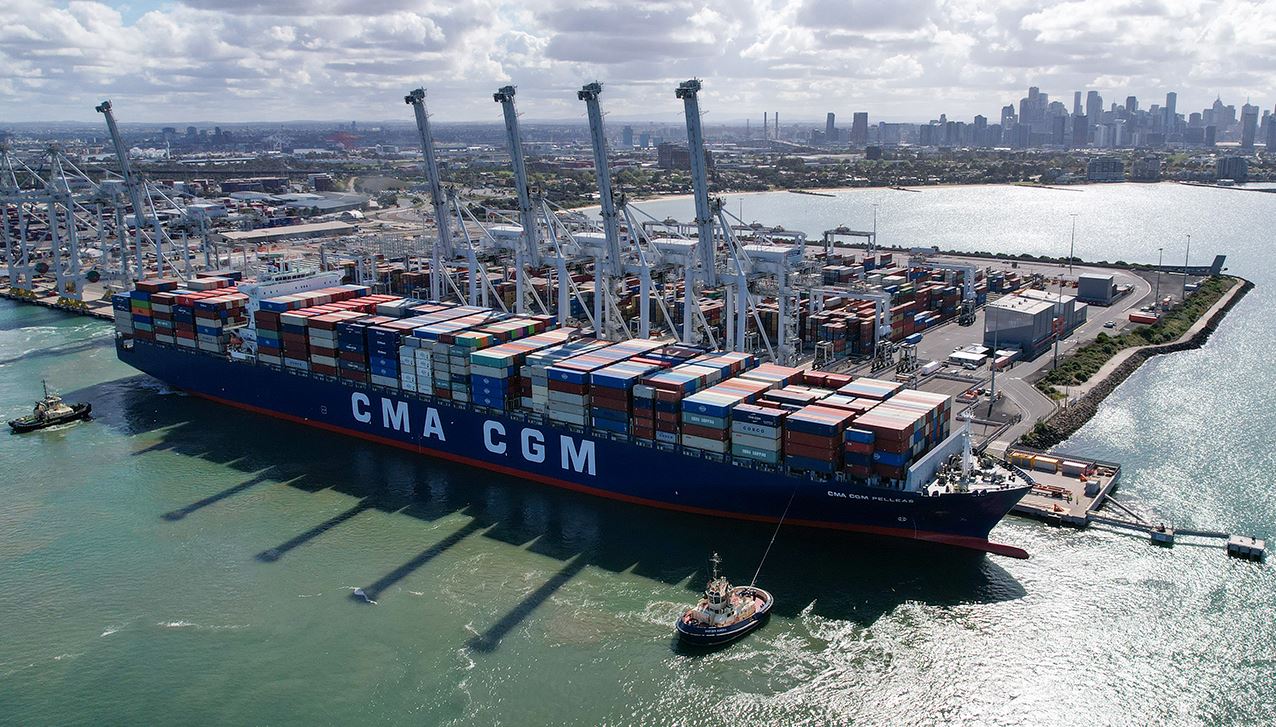President Donald Trump has once again placed China at the center of his trade policy agenda, warning that additional tariffs could be implemented as early as February 1. The proposed tariffs, which could be as high as 10%, are part of a broader strategy by the Trump administration to address both trade imbalances and the ongoing drug crisis plaguing the United States. In a press conference held in the Oval Office, Trump suggested that the new tariffs would be imposed on all Chinese imports, highlighting his ongoing commitment to a tough stance on international trade relations.
This declaration represents a significant escalation in Trump’s trade rhetoric, as it directly targets China, a nation with which the U.S. shares one of the largest trade relationships in the world. Trump’s move follows earlier threats directed at other North American trade partners, Mexico and Canada, where he proposed tariffs as high as 25%. However, his focus on China is particularly notable, given the backdrop of ongoing economic tensions between the two nations, which have been marked by Trump’s first-term efforts to renegotiate trade agreements and implement a series of tariffs aimed at reducing the trade deficit with China.
The proposed 10% tariff could have far-reaching consequences for both the U.S. and China, as it signals a shift from Trump’s initial, more moderate approach to tariff impositions. Trump’s earlier economic policies had called for the implementation of tariffs as high as 60% on Chinese goods, a figure that was part of his broader “America First” platform during his campaign. Although he had walked back some of those proposals, the re-emergence of such tariffs highlights his continued resolve to press China on a range of issues, including trade imbalances, intellectual property theft, and the importation of illicit goods.
A key driver of Trump’s renewed tariff threat is the administration’s ongoing battle with the opioid crisis, which he has repeatedly linked to the flow of fentanyl into the U.S. According to Trump, much of the fentanyl arriving in the U.S. is coming from China, often funneled through Mexico and Canada. In his remarks, Trump framed the tariff threat as a necessary measure to force China into addressing the fentanyl issue more aggressively. “We don’t want that crap in our country,” Trump stated, emphasizing that China must take responsibility for its role in the global drug trade.
The president’s comments harkened back to his first term, when he claimed to have brokered an agreement with Chinese President Xi Jinping in which China would take a more active role in curbing the flow of fentanyl and other dangerous drugs into the U.S. Under that proposed agreement, Trump suggested that China had agreed to impose severe penalties, including the death penalty, on drug traffickers. However, Trump has expressed frustration that the Biden administration has failed to continue pursuing this course of action, thus prompting his renewed threat of tariffs.
Despite the lack of concrete evidence that the proposed tariffs will lead to substantive action by China, the president’s rhetoric underscores his belief in the power of economic pressure to achieve diplomatic goals. The imposition of tariffs would undoubtedly have significant economic consequences for both nations, with U.S. importers likely facing higher costs that could be passed on to consumers. This concern has been echoed by market analysts, who have warned that further tariff increases could exacerbate inflationary pressures in the U.S. economy, which is still grappling with the aftermath of the pandemic-induced economic downturn.
In addition to the tariffs themselves, Trump’s recent executive action also calls for a broader review of U.S. trade policy. The directive asks key members of the president’s economic team, including the secretaries of commerce and treasury and the U.S. Trade Representative, to assess the causes of the U.S. trade deficit and identify unfair trade practices. The review also includes an evaluation of existing trade agreements, such as the U.S.-Mexico-Canada Agreement (USMCA), and explores ways in which the U.S. could strengthen its tariff enforcement mechanisms. Importantly, the executive action also asks for an evaluation of how U.S. trade policy can better combat the flow of fentanyl and undocumented migrants.
Despite the executive action’s potential to shape future trade policy, it remains unclear whether it will lead to immediate tariff increases. Trump’s previous proposals to implement tariffs of up to 25% on imports from Mexico and Canada and 60% on Chinese goods have been met with mixed reactions, both domestically and abroad. Within the administration, factions have emerged over how best to handle the issue of tariffs. Economists and market-oriented officials, such as Treasury Secretary nominee Scott Bessent and National Economic Council head Kevin Hassett, have advocated for a more measured approach, fearing that overly aggressive tariffs could harm American consumers and businesses. Meanwhile, hardline trade advisors like Peter Navarro and Howard Lutnick have pushed for a more confrontational stance, arguing that only through a full-scale tariff assault can the U.S. send a strong message to China.
As the administration weighs its options, the impact on Wall Street has been immediate. The Dow Jones Industrial Average surged by more than 500 points in response to the delay in tariff announcements, reflecting investors’ relief at the prospect of a more gradual approach to trade policy. However, the uncertainty surrounding Trump’s tariff strategy continues to cast a shadow over the financial markets, with concerns about the long-term impact of escalating trade wars and rising costs.
Trump’s repeated calls for tougher trade policies and tariffs suggest that he is intent on pursuing a more aggressive stance against China, even as his administration faces mounting challenges in its efforts to address the opioid crisis and trade imbalances. The president’s frequent comments on these issues suggest that tariffs will remain a key component of his economic strategy as he seeks to reshape U.S. foreign policy and assert his vision of American economic dominance on the global stage.









